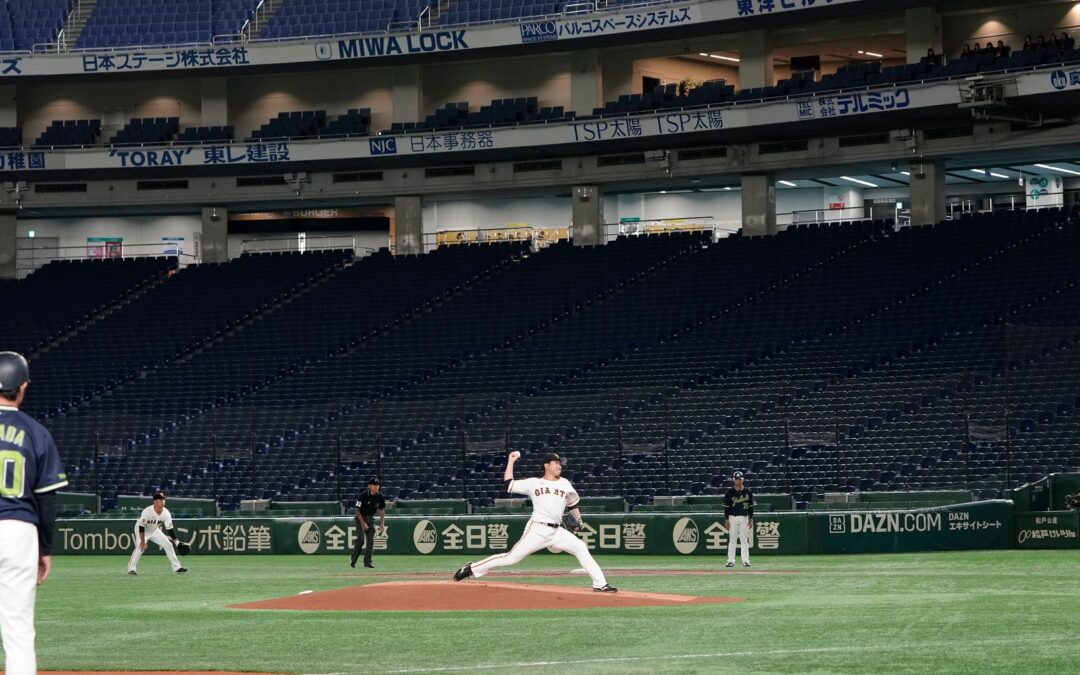Baseball is officially back. Sort of.
The Major League Baseball Players Association and the league ironed out the final details today ahead of a return to play, one that will see players report to camps by July 1 and play a 60-game season starting on July 23 or 24 in empty ballparks.
The last hurdle — an agreement on health and safety protocols — was cleared Tuesday night, some three-plus months after spring training was stopped due to the coronavirus pandemic.
“All remaining issues have been resolved and Players are reporting to training camps,” the union tweeted tonight.
Baseball will be forced to grapple with outbreaks of the coronavirus.
Forty MLB players and staff have tested positive for COVID-19 in the last week.
The positive tests came from players and staff who have been at MLB spring training facilities, and the exact number of clubs affected isn’t known but is reportedly more than 10.
Three members of the Colorado Rockies organization, including star outfielder Charlie Blackmon, have tested positive for COVID-19 the team confirmed today.
The positive tests came after workouts at Coors Field that have been taking place the last couple of weeks.
Five Philadelphia Phillies players and three team staff members tested positive for COVID-19, the team confirmed on Friday.
The outbreak occurred at the Phillies spring training facility in Clearwater, Florida.
Meanwhile, the Toronto Blue Jays closed their Dunedin, Florida. spring training facility after a pitcher on the 40-man roster began experiencing COVID-19 symptoms.
There will a special-injury related designation during the 2020 season for players who test positive for COVID-19 and are unable to participate in games.
The regular-season schedule will feature both divisional and interleague play, for which teams will play only within their corresponding geographical division to mitigate travel.
The league also said the majority of teams are expected to conduct preseason training in their home cities.
Each team will play 10 games against each of its four division rivals and four games vs. each of the five clubs in the corresponding division in the other league, according to details obtained by The Associated Press.
A team is scheduled to make only one trip to each city it visits in MLB’s shortest season since 1878, a schedule of such brevity that some fans might question the legitimacy of records.
The New York Yankees and Los Angeles Dodgers reopened as 7-2 favorites to win the World Series title, according to Caesars Sportsbook.
The Houston Astros are third favorites at 11-1.
“Major League Baseball is thrilled to announce that the 2020 season is on the horizon,” MLB commissioner Rob Manfred said in a statement. “We have provided the Players Association with a schedule to play 60 games and are excited to provide our great fans with Baseball again soon.”
Today’s agreement marked the end of a lengthy — and often contentious — battle between the sides.
On Monday, the league’s owners voted to implement a 60-game season that would begin around July 24.
After the vote, MLB asked the union whether players would be able to report to training camps by July 1 and whether the union would agree on the health and safety protocols.
It remains to be seen which players will report back to work — high-risk individuals are allowed to opt out and still receive salary and service time, but others who sit out get neither money nor the service credit needed for eligibility for free agency and salary arbitration.
After nearly three months of fruitless negotiations, MLB opted to use the right given to it in the parties’ March 26 agreement to impose a schedule of its desired length.
By choosing a season of 60 games, the league will pack in about as many games as it can through Sept. 27, the league’s self-imposed cutoff for the regular season to end.
Additionally, the 60-game season could serve as a buffer against a grievance by the MLBPA, which, in the case of a potential implementation, has been expected to charge the league with not fulfilling its duty to complete as full a season as possible.
The league could file a grievance against the union, as well.
Under the imposed season, players will receive the full prorated share of their salaries — about 37% of their full-season salaries and around $1.5 billion total.
The postseason will remain at 10 teams. Players will not receive forgiveness on the $170 million salary advance they received as part of the March agreement and will get no money from the postseason.
Players will not agree to wearing on-field microphones.
Teams will not wear advertising patches on their uniforms.
In a twist, the sides expanded the designated hitter to games involving National League teams for the first time and instituted the radical innovation of starting extra innings with a runner on second base.
Playoff teams remain at 10 for now — there is still talk of a possible expansion. The rejected deal had called for 16 teams.
The trade deadline will be Aug. 31 and the deadline to be in an organization for postseason eligibility is Sept. 15.
Teams can resume making trades Friday, when rosters will no longer be frozen.
Active rosters will be 30 during the first two weeks of the season, 28 during the second two weeks and 26 after that.
They will not expand to 28 on Sept. 1, as originally intended this year.
With no minor leagues, teams will be allowed to retain 60 players each, including a taxi squad.
Up to three players from the taxi squad can travel with a team to a game, and one of the three must be a catcher.
Where the Toronto Blue Jays will play remains uncertain.
An Ontario health official said MLB has not submitted a plan that local health officials need to allow the Blue Jays to play in Toronto.
